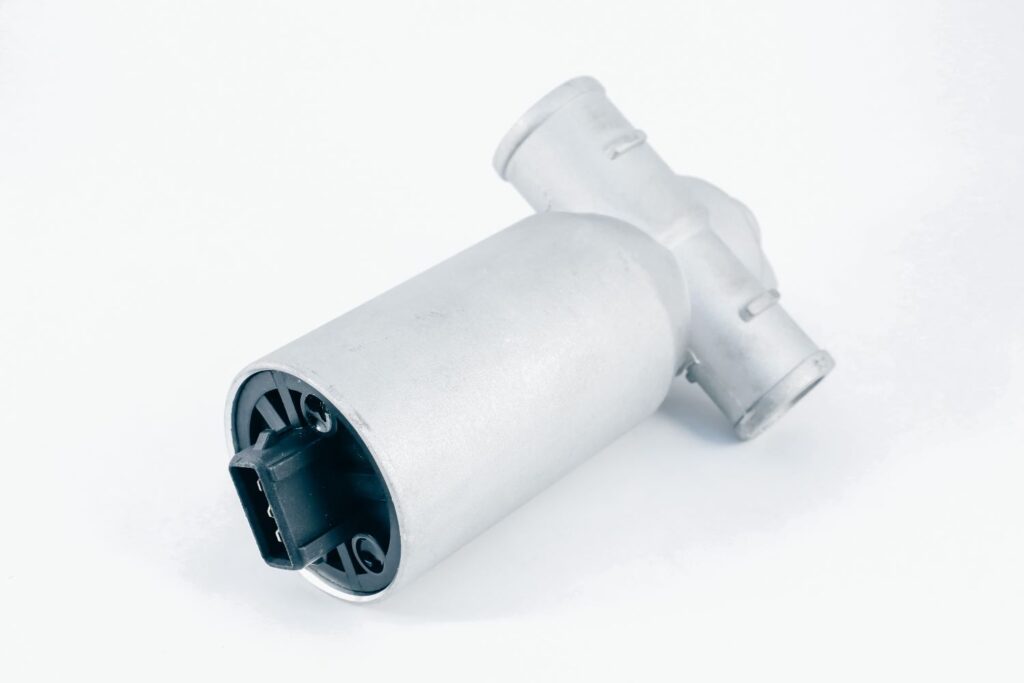Engine idle is a term that’s commonly thrown around by car enthusiasts and mechanics. But what does engine idle really mean? And what’s an engine’s idle speed?
An engine is idle when it’s running but the vehicle isn’t in motion. The speed at which the crankshaft spins is referred to as revolutions per minute (RPM). Unless the car has a start-stop system that doesn’t idle when stopped in traffic and starts itself when the throttle is applied, the engine will idle when sitting still.
An engine needs to idle at a high enough RPM so that the engine doesn’t stall. And when the vehicle is in gear or if the A/C is engaged, the throttle angle or airflow needs to be trimmed a bit higher (usually by the ECM/PCM on newer vehicles). Carbureted vehicles used a “throttle kicker” to open the throttle a bit or an idle speed control motor or vacuum operated idle load compensator.
The ideal engine RPM for idling can vary depending on the engine. An engine at idle typically has an RPM of 700 to 1,000. Meanwhile, sports bikes have an idle speed of 1,000 to 1,300 RPM. At the extreme end of the spectrum, F1 cars idle at an astonishing 5,000 RPM.

On carbureted engines with exhaust gas recirculation (EGR), the EGR valve is operated using ported vacuum, which means the vacuum is only delivered to the EGR valve diaphragm when the engine isn’t at idle. EGR flow at idle causes the engine to idle rough and the intake manifold will get very hot. Setting a carburetor’s idle speed a bit higher on these platforms can cause a rough idle. But even if the EGR has been disabled, a higher idle setting can cause the engine to “diesel” when the ignition is switched off.
Tinkering with the idle speed setting on a vehicle with an idle speed control motor can put the adaptive idle learning of the engine controller into a “dead band” where the IAC motor doesn’t function at all when the vehicle is idling.
–Richard McCuistian, ASE Certified Master Automobile Technician
What Are the Causes of a High or Low Idle Speed?
The engine’s idle speed is mainly controlled by a component called the idle air control (IAC) valve on older fuel injected vehicles. Since the early 2000s, the throttle plate has been electronically driven and controls idle speed.
On older platforms, the IAC valve allows air to bypass the throttle valve, allowing air to enter the engine even when the throttle valve is closed. This component functions similarly to the throttle valve, albeit only letting in a small amount of air. More air on a fuel injected engine means a higher idle, thus, a large vacuum leak in the plenum area of the intake can cause a high idle.
If the IAC valve is faulty, a vehicle might have a high idle RPM. It might also exhibit surging, which happens when the engine revs to a high RPM even when the driver isn’t pressing on the throttle pedal.
When the canister purge is activated at idle, it can also cause the idle to surge unexpectedly. This is normal, but if the driver has saturated the carbon canister by packing the fuel tank, the canister purge process may introduce liquid fuel to the intake and cause an idle stumble that triggers sudden idle control action by the ECM/PCM. This can make the vehicle surge so that it tries to accelerate unexpectedly while sitting at a traffic light.
If you’re wondering about other low idling causes, keep in mind that the IAC valve isn’t the only component that can cause a high or low idle speed. The ECM/PCM controls the ignition timing, which can also have an effect on RPM.
Keep in mind that a vehicle typically has a high engine RPM when the engine has just been started. That’s the nature of a gas burning engine. Even carbureted engines without emission controls have a fast idle for a minute or so until the choke opens.

Dashpot Mode
Regarding idle issues, there’s also a “dashpot” function where the PCM uses the IAC to hold the idle RPM just a bit higher for a moment when the throttle is released. The ECM/PCM tags the throttle position sensor voltage when the key is first switched on and uses that value for “closed throttle.”
On a scan tool, this is usually displayed in the datastream as “C/T.” If the TP sensor voltage is above the stored “closed throttle” value even though the throttle has been released, the scan tool will show part throttle (P/T) instead of “C/T” and the idle will remain in “dashpot mode” until the “C/T” value is present.
Effects of High and Low Idle Speeds
As previously mentioned, a high idle RPM will consume more fuel. Your engine will also produce more noise since having a high idle RPM is equivalent to slightly pressing the throttle pedal. The transmission will engage more harshly when you put it in gear, too, which can be unpleasant and stressful to the driveline components.
Meanwhile, a low engine RPM can cause vehicles to vibrate or shudder or stall. And since the alternator is charging the battery at idle and depends on its rotational speed to work, if you sit for a long time in traffic with the A/C engaged, a low idle may begin to drain the battery due to insufficient alternator output at idle.
These could actually be bearable. However, high or low idle RPM can be a result of faulty components like the PCM, which can lead to worse problems if left ignored. If you think your engine isn’t idling at its normal speed, consult a professional mechanic.
Any information provided on this Website is for informational purposes only and is not intended to replace consultation with a professional mechanic. The accuracy and timeliness of the information may change from the time of publication.
















